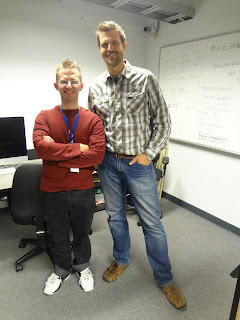As designers who will spend much of our careers sitting in front of computers working there are many common health issues that we could face. Prolonged sitting and lack of movement can cause mobility issues and pain throughout the body as we age.
Common Injuries
- Almost all are due to overuse and poor posture
- very easily treated with early intervention
- Therapist Assisted Stretching/Strengthening & Mobilization along with Self Strtching
Carpel Tunnel
- Compression of the nerves passing through your wrist
- Burning, tingling, itching or numbness in palm of the hand and the fingers. May find weakness and feeling swollen.
Thoracic Outlet
- Compression of the vessles passing under your collar bone/over your 1st rib and down the arm
- Numbness of the entire arm and hand. Pain often changes posture. Deep ache/pain in the shoulder and arm. Decreased circulation.
Eye Strain
- Eyes can become strained after staring at a computer screen for a long time, particularly if working in bad light
- Can be cause by improper eye wear
- Burning, tightness, sharp pain, dull pain, watering eyes, blurring, double vision, headaches
Sciatic Nerve Irritation
- Compression of the sciatic nerve generally due to the piriformis muscle
- Deep, sever pain starting low on one side of the back and shooting down the buttock and the leg. Pain increases with prolonged sitting.
Some Self Help Tips:
Computer work involves every little change in body position. Lack of movement and prolonged work in the wrong position leads to disfunction. You should take a 5-10 min break every hour
Wrist exercises
Neck and shoulder exercises
Back exercises
Device assistance exercises
Most importantly remember to move!











